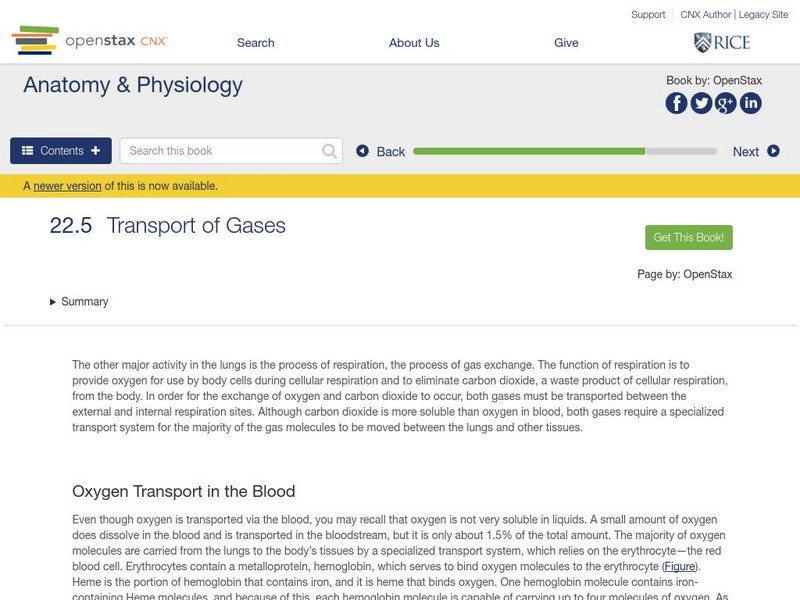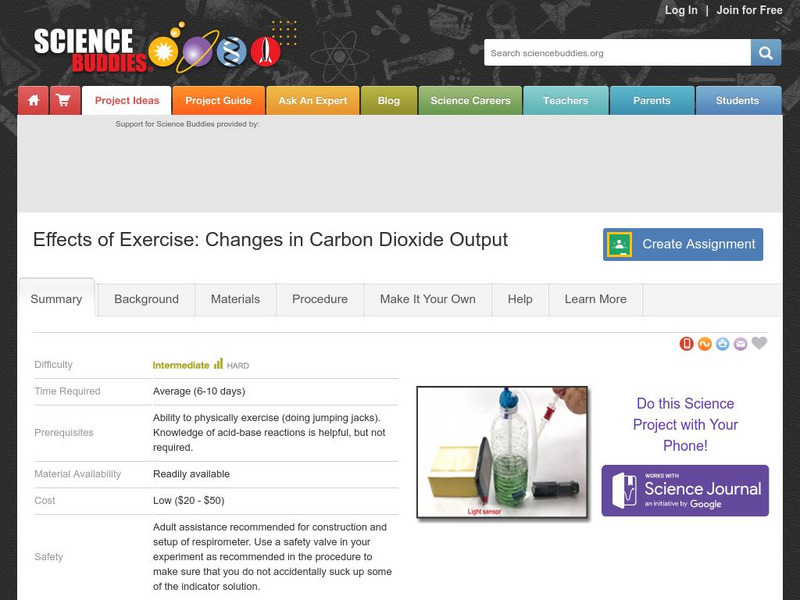Hi, what do you want to do?
Khan Academy
Khan Academy: Infographic: Chemical Abundances: Human Body
Almost 99% of the mass of the human body is made up of six elements: oxygen, carbon, hydrogen, nitrogen, calcium, and phosphorus. View this downloadable infographic on the human body.
Other
Inside the Human Body: The Respiratory System
Information, activities, and games pertaining to the respiratory system, including more specific topics like lung health and wellness, air pollution, and tobacco.
Other
Washington University: Hemoglobin and the Heme Group:
This site from the Department of Chemistry at the Washington University provides a deetailed study of the role of hemoglobin in blood physiology. The article is somewhat in-depth, complete with pictures, charts, and a bibliography.
TeachEngineering
Teach Engineering: What Do Bread and Beer Have in Common?
Middle schoolers are presented with information that will allow them to recognize that yeasts are unicellular organisms that are useful to humans. In fact, their usefulness is derived from the contrast between the way yeast cells and...
OpenStax
Open Stax: Requirements for Human Life
Earth and its atmosphere have provided us with air to breathe, water to drink, and food to eat, but these are not the only requirements for survival. Although you may rarely think about it, you also cannot live outside of a certain range...
Untamed Science
Untamed Science: Biology: Human Biology: Respiratory System
Make learning about the human respiratory system fun and easy. Explore how this system gets oxygen into the body for gas exchange.
OpenStax
Open Stax: Anatomy & Physiology: Transport of Gases
Students learn the principles of oxygen and carbon dioxide transport within the human body, and understand the structure of hemoglobin.
TED Talks
Ted: Ted Ed: How Breathing Works
This video describes how the process of breathing in the human body works. [5:19] Includes a brief quiz and a list of additional resources to explore.
Science4Fun
Science4 Fun: Oxygen
Fun and interesting information about Oxygen, the most abundant element in the human body. Learn about its characteristics, uses, where it is found, and discovery.
BioEd Online
Bio Ed Online: About Air
In this instructional activity students will use popcorn of different colors to model the composition of air. They learn that gases occupy space, air is a mixture of different gases, and the oxygen needed by the human body is not the...
Science Buddies
Science Buddies: Effects of Exercise: Changes in Carbon Dioxide Output
Everybody knows that your body needs oxygen to keep going, and that you breathe out carbon dioxide as waste. What happens when you exercise? You've probably noticed that you breathe faster, and your heart beats faster. What triggers your...
University of Utah
University of Utah: Cardiovascular Pathology Index
This site features a detailed index of photographs for cardiovascular pathology. You can see what a normal human heart looks like and what a sick one looks like too. Come and check it out.














